Herbal tonics and the use of natural medicinal herbs are enjoying a renaissance. These days more and more people are looking for alternatives to the medications that big pharma and the medical industry push on us.
This also means that there are a lot of DIY snake oil concoctions out there, that have questionable efficacy. Those are all fine and good in normal times. Yet what happens when SHTF, and you truly need a herbal tonic to help treat a serious illness or boost your immune system?
The good news is there are some medicinal ingredients and herbal remedies like this tonic that even doctors and medical researchers lend weight to. I got the recipe from a book written by Dr. Nicole Apelian, that includes more than 250 forgotten remedies we should still be using today. And everything is explained in so much detail, that you can make your own natural medicine even if you’ve never made a tea in your life.
Before we talk about how to make it, and use it, I thought we’d take a closer look at the medicinal value of each of the tonic’s ingredients.
Elderberries
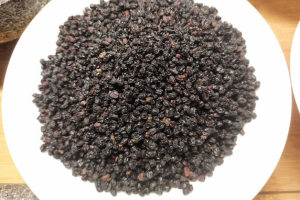 Both American and European elderberries have long been valued for their medicinal properties.
Both American and European elderberries have long been valued for their medicinal properties.
Both the berries themselves and the flowers can be used to create health tonics that boost the immune system. For this recipe, you need fresh or dried fruits, but I also like to add a few drops from this tincture to make the tonic even more potent.
Extensive research has been published on the efficacy of elderberries by the University of California Cooperative Extension and Mount Sinai’s health library, just to name a few.
Elderberries are a rich source of vitamin C and have been shown to contain high levels of antioxidants like phenolic compounds. These antioxidants help neutralize free radicals, in ways that reduce oxidative stress on the immune system. They can even contribute to improved cardiovascular and skin health.
However, you can’t just grow an elderberry bush and start chowing down on fresh berries at the first sign of a sniffle. The berries contain hydrocyanic acid and sambunigrin which can cause nausea when eaten raw. At my old hobby farm, I had two large bushes. The birds would eat half the berries every year and get sick before learning to leave the rest alone.
Pro Tip
The trick to neutralizing hydrocyanic acid and sambunigrin in elderberries is to either dry them or cook them. However, precision is key, as overcooking or drying at too high of heat can cause the medicinal compounds in the elderberries to break down.
If you’re drying fresh-picked berries, you want to target a dehydrating temperature of 140 degrees until they are completely dry.
If you’re cooking and rehydrating pre-dried elderberries, you want to immerse them in boiling water for at least 15 minutes, but not more than 20 minutes. This is the ideal method for working with the kind of dehydrated elderberries you can buy on the internet. A good resource to have is this foraging guide that helps you identify wild plants and how to tell them apart from their poisonous lookalikes.
Ginger
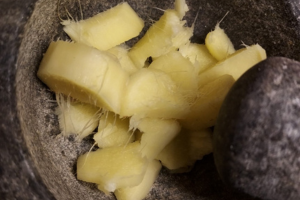 Ginger is one of the cornerstone medicinal ingredients used in a wide range of Eastern medicine traditions. Its primary bioactive compound is gingerol, which has strong anti-inflammatory and antioxidant effects. Not only does this reduce oxidative stress in the body, but it can also aid digestion.
Ginger is one of the cornerstone medicinal ingredients used in a wide range of Eastern medicine traditions. Its primary bioactive compound is gingerol, which has strong anti-inflammatory and antioxidant effects. Not only does this reduce oxidative stress in the body, but it can also aid digestion.
Ingesting ginger promotes the production of digestive enzymes and facilitates the peristaltic wave. This can relieve discomfort, bloating, and nausea. Studies by the NCCIH, and Harvard Health also found that ginger effectively reduces nausea caused by motion sickness, morning sickness, and even chemotherapy.
Related: 10 Natural Remedies From the Civil War Era
Ginger also has immune-boosting effects that can further help battle mild cases of food poisoning. Research has found that it has antimicrobial and antiviral properties as well as the ability to inhibit the growth of bacteria like E. coli.
Honey
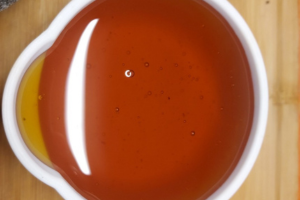 Honey’s unique composition of antioxidants, enzymes, essential vitamins, and key minerals has several scientifically backed medicinal benefits. In terms of this herbal tonic, it also provides some sweetness to help counter a little of the astringent bitterness of the elderberries.
Honey’s unique composition of antioxidants, enzymes, essential vitamins, and key minerals has several scientifically backed medicinal benefits. In terms of this herbal tonic, it also provides some sweetness to help counter a little of the astringent bitterness of the elderberries.
Honey gets most of its strong antibacterial properties from a high content of hydrogen peroxide and methylglyoxal. This boosts its effectiveness against many strains of antibiotic-resistant bacteria.
Many of honey’s antioxidant properties come from phenolic compounds and flavonoids, which help reduce oxidative stress. A 2020 study by Harvard Health also found that ingesting honey can help reduce blood pressure, which reduces overall stress on many bodily functions.
The Mayo Clinic also notes that honey is effective for soothing coughs and sore throats. This is especially helpful for children who can’t safely take commercial OTC cold medications.
Related: How To Preserve Foods In Honey
Honey also has anti-inflammatory properties that can help digestive inflammation, gastritis, and acid reflux. A 2016 study by the National Center for Biotechnology Information also found that honey helps with nutrient absorption, which helps other medicinal ingredients in this tonic to be rapidly picked up by the digestive tract.
Cinnamon
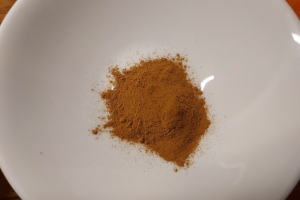 Technically in this medicinal tonic recipe cinnamon is optional. However, if you’ve got some on hand (particularly real cinnamon) I recommend including it.
Technically in this medicinal tonic recipe cinnamon is optional. However, if you’ve got some on hand (particularly real cinnamon) I recommend including it.
Cinnamon is high in antioxidants, such as polyphenols, which help reduce oxidative stress in the body and immune system.
These compounds also play a role in lowering inflammation and protecting cells from damage. This can be especially helpful with the sore throat that often occurs in the early stages of influenza.
Cinnamon has natural antimicrobial properties that can fight bacterial, viral, and fungal infections. This can be especially helpful if you make a batch of medicinal tonic and you can’t take it immediately or refrigerate it for storage.
A good place to discover different ways to use cinnamon for your health is another great book on natural remedies that will prove indispensable when pharmacies get looted in a crisis. You can find here protocols designed to tackle the root cause of your health problems. The protocols go into detail in each section, showing you exactly what to do and when to do it. At the end of every protocol, you’ll find a table that summarizes which actions and remedies you can take every day of the week so you’ll never be left guessing what to do next.
How to Make Elderberry Medicinal Tonic
Making this medicinal tonic is relatively simple and takes around an hour. However, precision in both measurements and timing is still required. Since the elderberries need to be cooked, the tonic will be too hot to drink for at least half an hour. If possible, you can chill it down by placing the bottle in a bowl of ice or a wintertime snowbank.
Equipment
- A 4-quart sauce pot
- A funnel
- A sieve, paint strainer, or cheesecloth
- Whisk (Optional)
- Mortar & Pestle (Optional)
Ingredients
- 2 cups of dried or 1 cup of fresh elderberries (Destemmed and cleaned)
- 1 cup of raw honey
- 4 tablespoons of fresh ginger (minced or ground)
- 1 tablespoon (2 sticks) of cinnamon, ground
- 1 teaspoon of cloves (ground)
Instructions
For this medicinal tonic recipe, I’m going to assume you’re working with dried/dehydrated elderberries. They’re more accessible to the average person and when stored properly can have an effective shelf life of up to 2 years.
I prefer to use a mortar and pestle to break down the elderberries and ginger. This expresses more of the microscopic surface area and exposes nucleation sites. It also helps extract more flavonoid compounds from the ginger root in the brewing process.
Step One: Measure the ingredients and put the water in the pot on medium heat.
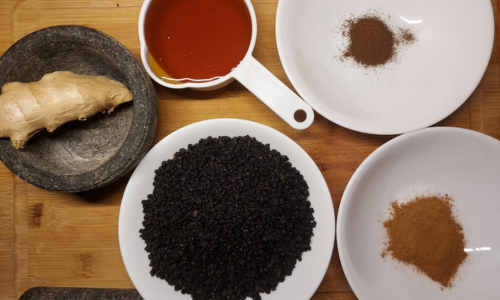
Step Two: Shred the ginger in a micro planer, chop fine, or crush in a mortar & pestle.
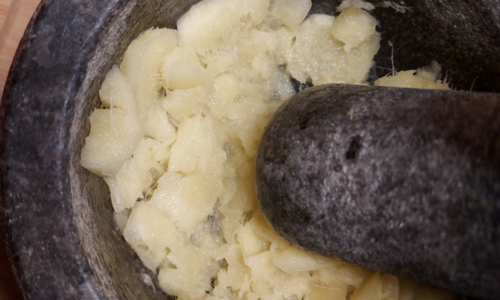
Step Three: Chop the dried elderberries finely or crush them in the mortar and pestle with the ginger root.
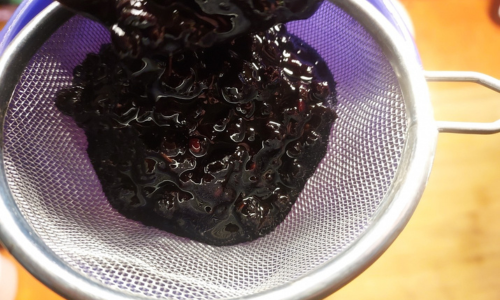
Step Four: As soon as the water comes to a boil add the ginger and elderberry mixture. Stir to keep the solids from settling on the bottom. If necessary, adjust the heat so that the water is lightly simmering, and not at a full roaring boil.
Step Five: Allow the elderberry and ginger mixture to simmer for 15 minutes. Then turn the heat off.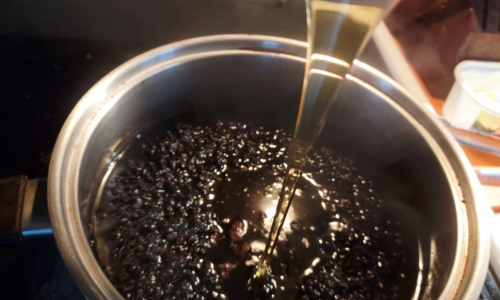 Step Six: Crush the cinnamon sticks into a fine powder in the mortar & pestle. Then add the powder and the cloves to the pot and whisk to combine.
Step Six: Crush the cinnamon sticks into a fine powder in the mortar & pestle. Then add the powder and the cloves to the pot and whisk to combine.
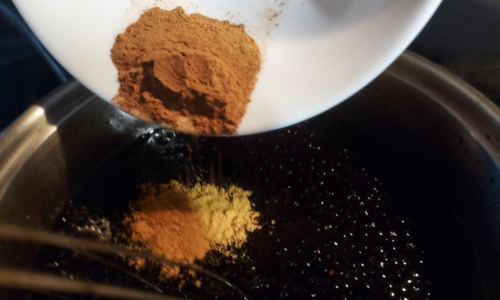
Step Seven: Add the honey at a slow drizzle, whisking to combine.
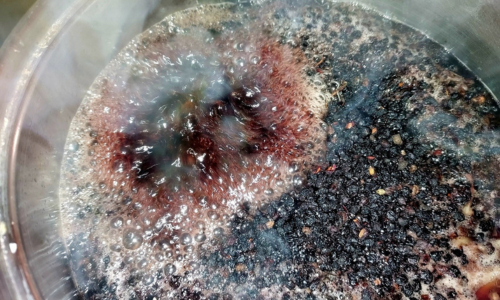
Step Eight: Allow it to cool for at least one hour. This will give the elderberries and other dry ingredients time to fully rehydrate and release their medicinal components into the tonic.
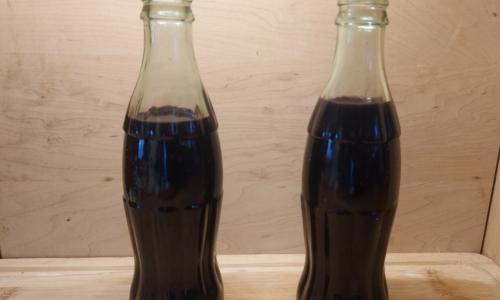
Step Nine: After it’s cooled, insert a strainer into a large funnel and slowly pour into two sipping/storage bottles. Split evenly, you should get two doses around 1.5 cups each or more. The strained solids are safe to add to your compost.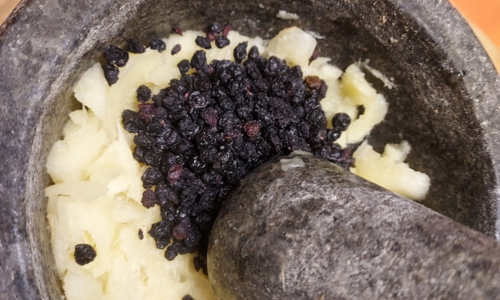 Step Ten: Allow the bottles to chill for at least another hour before administering.
Step Ten: Allow the bottles to chill for at least another hour before administering.
Storage Information
You can store this medicinal tonic in a sealed vessel in a refrigerator for up to 3 months. Just make sure it remains sealed and at a temperature below 40 degrees. Freezing is not an option, as ice crystals can damage some of the tonic’s medicinal compounds.
Dosage Information
You can drink up to 2 cups of this medicinal tonic every six hours. My uncle used to make an elderberry tonic similar to this, and he believed the ideal way to administer it was to slowly sip it on an empty stomach over the course of two hours, saving roughly half a cup until the very end, which he would gulp down at once.
Then he would get up and take a vigorous short walk. The equivalent of twice around the block.
This approach has some scientific efficacy. The University of Alberta published research showing that light exercise after ingestion improves certain medications and even insulin absorption.
You may also like:
Weird Ways to Get Food After SHTF
Do You Know What Happens If You Add Honey Over Onions (Video)

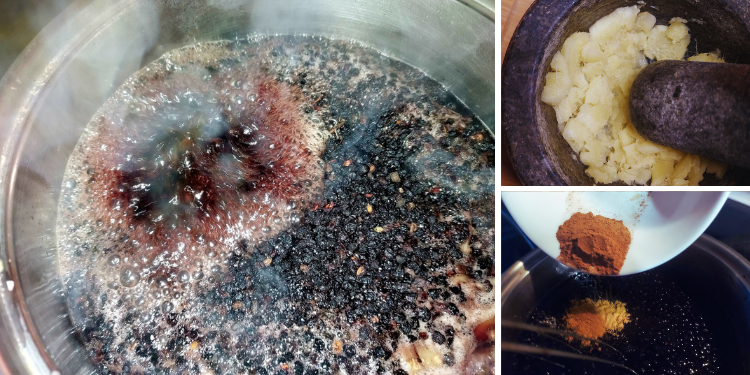













You never said how much water to use
Will this potion help with Lisa Blake’s terrible case of
DUMBCUNTITIS???
I wouldn’t add the raw honey until it’s cooled considerably. Heat kills all the good stuff in raw honey.
I’m read up on elderberry tea, there is a lot of anecdotal evidence that a cup or two a day prevents respiratory virus infections. I have, for 40 years, taken one capsule (1000mg) of Echinacea extract every fourth day and, for forty years, have never had a respiratory virus, cold, flu, covid, whatever. So I haven’t felt the need to try elderberry.
I would say that anytime a writer is talking about anti-oxidants and free radicals you should be skeptical, that is the modern version of a snake oil salesman.
I cook all of our meals fresh at home so I don’t need a tincture or tonic. Lunch today was a medium fresh tomato chopped, 2 slices of sweet onion chopped, one jalapeno chopped, 2 small mushrooms sliced, cilantro, 4 oz of beautiful ground beef from my country butcher friend, 2 tablespoons of goat cheese, a slice of swiss cheese, 1/4 cup of red wine, spiced with homemade Sazon seasoning mix, cooked all together in one pan over medium heat Sofrito style until it all blends into a thick delicious stew. This is food as medicine, but more than that, it’s tastier than anything you’ll get in a fancy sit down restaurant.
Hi ivymike , I’ll be trying to grow some Echinacea from seed this year from Dr. Nicole Apelian Medicinal Garden Kit…Can’t wait for spring…But it sounds like you been eating well for a long time….Nice .
My winter garden experiment is doing well .It’s getting tested well right now.I learn how to successfully grow from seed last year. I’m still learning new weeds…in my yard….my new love……